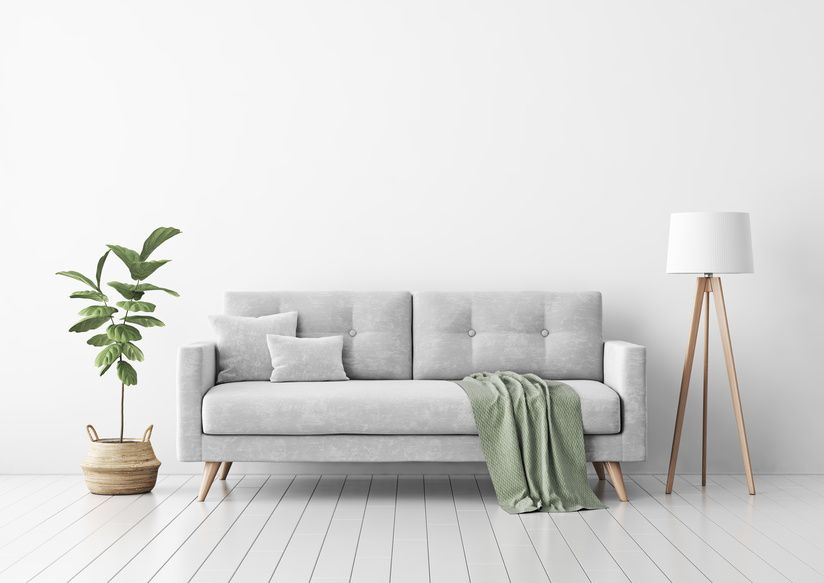Although today's consumer looks for convenience in the products and services they buy, they also want to make a difference in the world. According to a 2018 Architectural Digest report that cited data from West Elm, nearly "85% of millennials seek out responsibly sourced product." What's more, consumers may be more sensitive -- literally -- to the materials they use in their homes. Approximately 25 million Americans currently suffer from asthma, while allergies impact 50 million people throughout the United States. When the desire to protect the planet and to protect one's respiratory system come together, there is definitely some overlap in the items used to furnish a home. Products that are designated as low-VOC and non-toxic, for instance, are better for the environment and for our breathing. But that's not to say that decorating with these two priorities in mind is a simple task. Still, it's one you may find to be very worthwhile.
Although sustainable pieces are becoming easier to find, due to increasing demands, it can be difficult to find furniture that's eco-friendly but that won't aggravate your allergies. Second-hand furniture, for example, may be more sustainable, but bringing it into your home may not be the best choice if it's been sitting in someone's dusty attic for a couple of decades. For people with allergy concerns, picking up a couch at a thrift store is usually out.
But buying new pieces doesn't have to mean you're automatically hurting the environment. Since the average sofa's lifespan is only about eight years, you might be better off investing in a high-quality couch that will last for a longer period than a worn-out or cheap model you'll have to replace a couple of years down the line. Not only is that idea more cost-effective, but it's also better for the environment. What's more, this can allow you to find an option that's both sustainably sourced and allergy friendly.

When shopping for big ticket items like sofas, you'll want to conduct thorough research. Firstly, you'll want to look for models that contain no harmful chemicals, even if those chemicals were actually developed to save lives. Some experts point out that upholstered furniture tends to be tough for those with respiratory issues, since it needs to be cleaned more frequently than a material like leather or vinyl. Levels of organics tend to be two to five times higher indoors than outside, so cleaning needs to be a priority anyway to stave off health problems. But leather and vinyl are two materials that aren't really considered to be eco-friendly, due to the processed used to make these materials. There are some furniture stores that specialize in eco-friendly leather furnishings or couches made of materials like hemp fabrics. The perk of these options is that they're still incredibly easy to clean and won't be as harmful to the environment as other materials. Just keep in mind that you may have to spend a bit more to save the earth and to save your sinuses.
In general, you'll also want to avoid using a lot of fabrics and refrain from heavy draperies, as their use can lead to the gathering of dust. Light cotton curtains are easier to clean, though you should make sure that they're organic and ethically made, too. In general, bare floors are better for those with allergies and respiratory issues -- and if you're getting your floors redone, look for sustainably sourced wood options like reclaimed planks or bamboo. Carpets tend to trap dust and dirt and aren't all that eco-friendly. If you need to cover the floors, look for throw rugs that are easy to wash and that are both non-toxic and sustainably made. And if you're planning on redecorating a room, opt for low-VOC paints that are washable and allergy friendly instead of wallpapers (which trap dust) or other decorative options that contain toxic ingredients. Finally, keeping your clutter to a minimum will help, as well. Not only will this allow you to live more simply and generate less waste, but it will also help you breathe more easily and eliminate excess dust, dirt, and bacteria.
Committing to a greener lifestyle can be a challenge, as can minimizing the elements in your home that can aggravate allergies. But as long as you know what to look for, you can address both decor issues at once and obtain greater peace of mind in the process.

